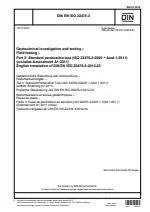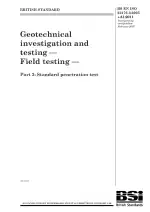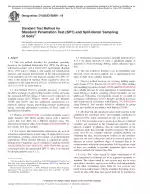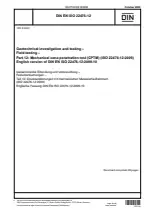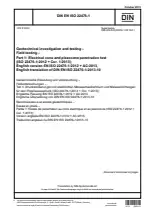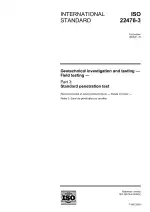Geotechnical Investigation and Testing - Field Testing - Part 3: Standard Penetration Test
Also Known As:
The DIN EN ISO 22476-3 standard provides requirements for conducting indirect investigations of soil using the standard penetration test method. This is a part of geotechnical investigation and testing in accordance with EN 1997-1 and EN 1997-2, alongside direct investigations such as sampling.
The standard penetration test is conducted to determine the resistance of soils at the base of a borehole to dynamic penetration using a split barrel sampler. The test also involves the recovery of disturbed samples for identification purposes. In certain cases, such as in gravelly soils and soft rocks, a solid cone is used instead of the split barrel sampler.
This test is primarily used to assess the strength and deformation characteristics of cohesionless soils, although it can provide valuable data for other soil types as well. The basis of the test involves driving the sampler into the soil by dropping a 63.5 kg hammer from a height of 760 mm onto an anvil or drive head. The number of blows required to achieve a penetration of 300 mm is known as the penetration resistance (N).
| Descriptors | Civil engineering, Composition of the ground, Construction, Definitions, Descriptions, Designations, Dynamic sounding rods, Earthworks, Exploration, Field investigations, Geotechnics, Group of soils, Investigations, Mechanical testing, Penetrant flaw detection, Penetration depths, Penetration tests, Penetrations, Penetrometers, Pile hammers, Properties, Sampling, Site investigations, Soil mechanics, Soil sampling, Soil science, Soil surveys, Soils, Soundings, Structural engineering, Subsoil, Test equipment, Testing, Bottom, Ground, Floors, Reconnaissance |
| ICS Codes | 93.020 - Earthworks. Excavations. Foundation construction. Underground works |
| Language(s) | English |
| File Size | 542.7 KB |

